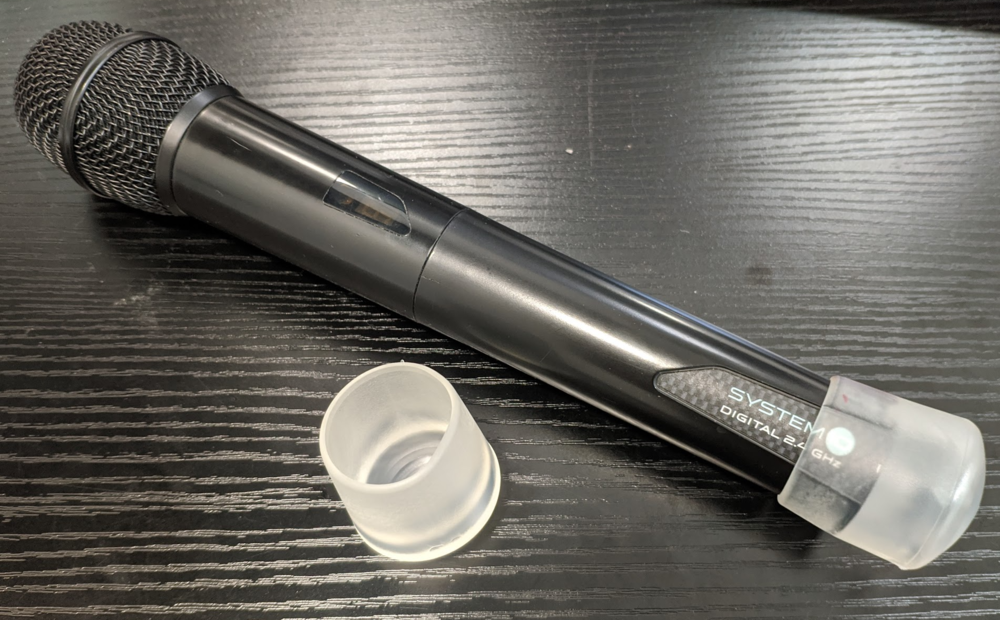-
Posts
56 -
Joined
-
Last visited
-
Wei Liang Yap started following behringer x32 rack as usb audio interface? , One-handed Pianist? , DI box problem? and 3 others
-
If I am doing a multitrack recording, I start first by laying down the piano as a click track, with the overall "feel" of the song. I use a digital piano, so I have MIDI recorded initially. Then I add the other parts, and, as necesary I can delete or re-record conflicting parts of the piano. Although - being a pianist - that is often the prominent instrument in my multitrack recordings anyway.
-
Thank you everyone. On this occasion the solution was cleaning the contacts on the jack inputs (the unbalanced side of the DI box). On stage, swapping to a different DI box resolved the problem at the time - so I do not think it was static. Prior to fixing it, the problem was reproducible in a different environment (my house).
-
Thanks. It is a Behringer Ultra DI. Same problem regardless of phantom power or battery. However after I cleaned the contacts in the jack inputs (the input and the link out) - the problem seemed to improve a lot. I don't understand why though.
-
If my active DI box picks up a humming noise when I put my hand near/on it, and also seems to function like a microphone (it sends a noise when I knock it),... is it time to bin it? I had a look inside - the capacitors look ok, and measure correctly (with a capacitance meter). (I was wondering whether to replace the caps). Thanks in advance
-

What are you using as your Studio Monitor Controller
Wei Liang Yap replied to jesse g's topic in The Coffee House
what is the shelf life of things like FaderLube? -

why are two microphones used? (see picture)
Wei Liang Yap replied to Wei Liang Yap's topic in Production Techniques
Ah thanks. There were pop singers at that concert too - didn't occur to me that a backup mic could be passed to them quickly. There was an "orchestra" there - and each instrument appeared to be individually mic-ed. Some of the choir were clearly singing but I couldn't spot their mic(s). -
So I was watching the Coronation Concert the other day and noticed that Bryn Terfal and Andre Bocelli using two microphones each. What is the reason? I am curious. Is it redundancy (in case one "breaks")? Is there some clever noise reduction technique (although I can't understand how it would work side-by-side but https://www.soundonsound.com/sound-advice/q-why-do-sometimes-see-singers-using-two-microphones-stage describes what looks like a back/front method for noise reduction). I've used "two" microphones in studio before - but it was really that one of them was "fake" such that it could be touched, fiddled, etc (the singer was a playful child) whilst the other microphone further behind was doing the proper work, at the desired distance from the singer. https://www.classicfm.com/artists/andrea-bocelli/bryn-terfel-youll-never-walk-alone-coronation-concert/
-

Instrument definition for Roland RD2000
Wei Liang Yap replied to Wei Liang Yap's topic in Instrument Definitions
added the new patches from V-Piano Expansion 01 German Concert -
Thanks. I quite like the X32 but for now (for my own use) I realise that still need/want one SPDIF input and so this on it's own does not suit. Wei Liang
-
The idea is to leave the mic on. Prevent people from muting it. Or turning it off. (The switch is at the bottom of the mic, covered by the ferrule)
-
Yup the mute button. It stresses me that the first thing people do with the microphone is turn it off (or mute it) when they need to use it.
-
-

Loudness Normalisation (offline) of clips
Wei Liang Yap replied to Wei Liang Yap's topic in Feedback Loop
Thanks @Hatstand. Most of the material is speech. None of the people have a clue about what decibel is, and they will have done well if they even managed to send the video across. So it will be for me to try to make it such that it is loud enough, and not too loud. (The aim is so that the listener doesn't have to reach for the volume control many times) For uncomplicated clips it has been fastest to use Audacity for loudness normalisation to a target. (Can make it a macro, with limiter as second step). For the complex clips I use cakewalk plus any combination of envelopes, compression, limiting, erase, etc. I was hoping however that Cakewalk had a simple loudness normalisation tool like audacity. Hence this feature request. Wei Liang -
Hi - this is probably much more than I would ever need (in terms of I/O and routing), but I am wondering if anyone has experience of using this as a USB audio interface with Cakewalk. Any issues with its ASIO drivers?
-

Loudness Normalisation (offline) of clips
Wei Liang Yap replied to Wei Liang Yap's topic in Feedback Loop
Thank you all for the suggestions. I'll look at the MLoudnessAnalyzer and 4U meter as well.








